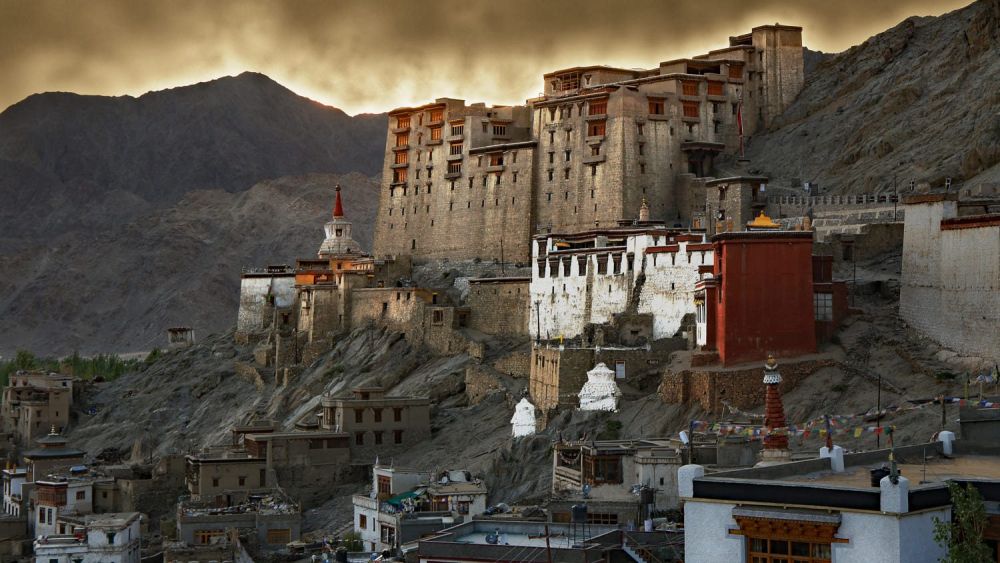

Leh Palace, often referred to as the 'Lhachen Palkhar,' is one of the central attractions in the majestic region of Leh, Ladakh, which is nestled high in the Indian Himalayas. This former royal palace, which overlooks the enchanting town of Leh, offers a panoramic vista of the Stok Kangri and Zanskar mountains. The palace’s history dates back to the 17th century when it was constructed under the patronage of King Sengge Namgyal.
The Leh Palace has been a testament to Ladakh's regal past and has served as a residence for the royal family until the 19th century when they were compelled to move to Stok Palace due to the Dogra invasion. Despite the move, Leh Palace has retained its importance and continues to be an emblem of the rich heritage of the region.
Constructed in the medieval Tibetan architecture style, the nine-story palace is an exemplar of the architectural grandeur of that era. It is often compared to the Potala Palace in Lhasa, and justly so, as it shares similar design elements. However, the Leh Palace has witnessed significant weathering over the centuries and is currently under the Archaeological Survey of India (ASI) for restoration purposes.
Interest in Ladakh as a tourist destination picked up in the 1970s following the opening of Ladakh to foreign travelers. Since then, Leh Palace has been a significant point of interest for tourists from around the globe. Its history, unique architecture, and the rich cultural backdrop of Ladakh have made it an essential stop for those on a journey to explore the Himalayas.
In recent years, sustainable and responsible tourism trends have taken hold in Ladakh. Visitors are increasingly sensitive to the ecological and cultural impact of their travels. The region, including Leh Palace, sees a blend of adventure tourists, culture enthusiasts, and nature lovers, who come not only to marvel at the historical monuments but also to experience the unique traditions and way of life in this remote part of the world.
Tourists visiting Leh Palace can explore its many rooms and courtyards, which house old paintings and artifacts, giving a glimpse into the region’s glorious past. The palace also features a museum that holds a rich collection of jewelery, ornaments, ceremonial dresses, and crowns. The summit provides an unrivaled view of the Ladakh mountain range, which is particularly enchanting during sunrise and sunset.
The best time to visit Leh Palace is between May and September when the weather is most favorable for tourism. During this period, the snow from the harsh winters would have melted, and the roads are generally accessible, making it an ideal time for tourists to explore the beauty of Leh and its surroundings.
Leh Palace continues to stand as a proud symbol of the heritage of Ladakh and a must-visit for anyone looking to experience the intertwining of history and natural beauty. The region's commitment to sustainable tourism ensures that this magnificent monument is preserved for generations to come.